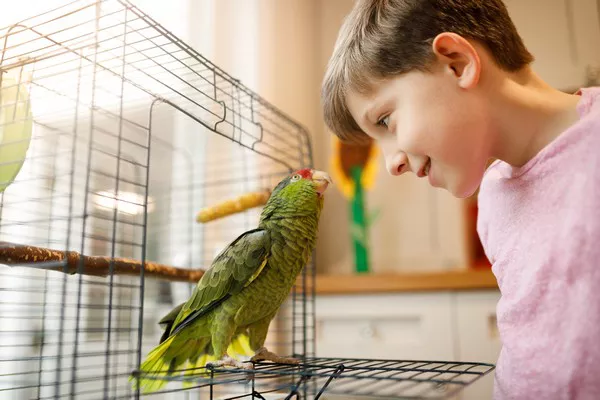Foxhounds are a group of dog breeds primarily known for their role in hunting foxes. These dogs are renowned for their stamina, intelligence, and strong instinct to track scents. Originating from a long history of hunting, their behavior, temperament, and tendencies are deeply tied to their role as working dogs. However, many prospective dog owners wonder whether foxhounds can be aggressive. Understanding the nature of this breed, its training requirements, and environmental influences can provide insights into whether foxhounds display aggression and how to manage it.
In this article, we will explore the foxhound’s breed characteristics, their behavior patterns, and what factors influence aggression in these dogs. By the end, readers will have a clearer picture of whether foxhounds are prone to aggression, how they interact with humans and other animals, and the best practices for raising a well-adjusted foxhound.
Foxhounds: A Brief Overview
The term “foxhound” typically refers to two main breeds: the American Foxhound and the English Foxhound. While both breeds share similar traits, they differ in some important aspects such as size, temperament, and historical purpose.
American Foxhound
The American Foxhound is a breed that originated in the United States in the 18th century, with breeding rooted in the desire to create a dog suited for hunting foxes over long distances. American Foxhounds are known for their endurance, speed, and keen scenting abilities. They are medium-sized dogs with a lean, athletic build, and they are known for their friendly and social nature.
English Foxhound
The English Foxhound is an older breed that was developed in England in the 16th century. It was originally bred for fox hunting, particularly by the English aristocracy. English Foxhounds tend to be larger and more robust than their American counterparts, and they have a calm, dignified demeanor. These dogs are equally skilled in scent tracking and are often seen as more reserved or independent compared to American Foxhounds.
Despite their differences, both breeds share core traits that contribute to their temperament and behavior. These traits include a high prey drive, strong work ethic, and sociable nature. However, when discussing the potential for aggression, it’s essential to focus on these common characteristics and how they relate to behavior.
Are Foxhounds Prone to Aggression?
In general, foxhounds are not known to be aggressive. However, like any dog breed, their behavior can vary depending on several factors, including genetics, upbringing, training, and socialization. While aggression is not a defining trait of foxhounds, certain circumstances can trigger aggressive behavior. Let’s take a closer look at the factors that may contribute to aggression in foxhounds.
1. Prey Drive and Hunting Instincts
Foxhounds are hunting dogs, and their primary instinct is to chase and track prey, particularly foxes. This strong prey drive is ingrained in their DNA, and it’s one of the reasons they excel in tracking and hunting. While this instinct is not directly linked to aggression towards people or other animals, it can manifest in behaviors that might be perceived as aggressive.
For instance, a foxhound may show heightened excitement or even a level of aggression towards smaller animals, such as cats, rabbits, or squirrels, due to its natural prey drive. This does not necessarily mean that the foxhound is inherently aggressive; rather, it is acting on instinct. Training and socialization can help mitigate these behaviors by teaching the dog to focus on its human family and not on potential prey.
2. Protective Instincts
Some foxhounds may exhibit protective instincts, especially if they feel that their home or family is under threat. This instinct is more common in foxhounds that have been bred to guard property or livestock, but it is not a universal trait in all foxhounds. In some cases, if a foxhound perceives an unfamiliar person or animal as a threat, it may respond with defensive aggression.
However, it’s important to note that this type of aggression is typically not an inherent characteristic of the breed. Most foxhounds are not aggressive towards strangers unless they feel provoked or threatened. A foxhound’s reaction in these situations is often a reflection of its individual temperament and the level of socialization it has received.
3. Fear-Based Aggression
Like many dogs, foxhounds can sometimes display aggression due to fear. If a foxhound has had negative experiences with humans or other animals, it may develop a fearful reaction, which can escalate into aggressive behavior if the dog feels cornered or threatened. This kind of aggression is typically a defense mechanism rather than a sign of a dog’s general temperament.
Fear-based aggression can be particularly problematic if the dog is not properly socialized or if it has been subjected to harsh training methods. Fear aggression can also occur if a foxhound is placed in an unfamiliar or stressful situation where it feels out of control. It’s essential to address fear aggression early on with gentle, positive reinforcement-based training.
4. Lack of Socialization
Foxhounds, like all dogs, benefit greatly from early socialization. Puppies that are not exposed to different people, animals, environments, and experiences during their formative weeks may develop behavioral problems, including aggression. Socialization helps foxhounds understand how to interact appropriately with both humans and other animals.
Without proper socialization, foxhounds can become territorial, anxious, and even aggressive in certain situations. For example, an unsocialized foxhound may growl, snap, or bark at new people or animals simply because it is unsure of how to behave. Early socialization, coupled with positive reinforcement, can go a long way in preventing these types of behavioral issues.
5. Inadequate Training
Foxhounds are intelligent dogs, but they are also independent and can be stubborn at times. If a foxhound is not adequately trained, it may engage in undesirable behaviors, including aggression. Dogs that have not been taught proper manners or how to respond to commands may act out of frustration or confusion.
Training is a critical part of managing a foxhound’s behavior. A well-trained foxhound that understands basic commands and proper behavior will be less likely to display aggression, as it knows how to interact appropriately with people and other animals. Conversely, a foxhound with little or no training may be more prone to acting impulsively, leading to potential aggression.
Can Foxhounds Be Aggressive Toward Other Dogs?
Foxhounds are typically friendly and sociable with other dogs, especially when they are raised with them or socialized properly. However, their strong prey drive and the fact that they were originally bred to work in packs of dogs during hunts can sometimes lead to competitive or dominant behavior with other dogs, particularly those of the same sex.
If a foxhound has not been well-socialized or if it has had negative interactions with other dogs, it may exhibit aggressive tendencies. Additionally, a foxhound may act aggressively toward other dogs if it feels its territory is being threatened or if it is trying to assert dominance. This is more likely to happen in untrained or under-socialized dogs, so early training and proper introductions to other dogs can help prevent these issues.
Managing Aggression in Foxhounds
While foxhounds are not inherently aggressive dogs, they may display aggression under certain circumstances. To ensure that your foxhound grows up to be a well-adjusted and non-aggressive companion, it is important to follow these guidelines:
1. Early Socialization
Expose your foxhound to a variety of people, animals, environments, and situations from a young age. Socialization helps your dog learn how to interact appropriately with the world around it and reduces the likelihood of fear-based aggression. Take your puppy to puppy classes, allow it to meet new dogs, and introduce it to different environments to build its confidence.
2. Consistent Training
Provide consistent, positive reinforcement training. Foxhounds respond well to reward-based training methods, such as treats, praise, and toys. This approach helps to reinforce good behavior and reduce undesirable behaviors, including aggression. Be patient and consistent, as foxhounds can be a bit independent and may require extra time to learn commands.
3. Exercise and Mental Stimulation
Foxhounds are highly energetic dogs with a lot of stamina. Regular exercise is essential for their physical and mental well-being. A tired dog is less likely to engage in destructive or aggressive behavior. Take your foxhound for daily walks, runs, or play sessions, and provide activities like puzzle toys to challenge its mind.
4. Avoid Negative Reinforcement
Never use physical punishment or harsh training methods with a foxhound. This can lead to fear-based aggression and damage the trust between you and your dog. Focus on positive reinforcement, patience, and clear communication when training.
5. Professional Help
If you notice signs of aggression in your foxhound, consider seeking the help of a professional dog trainer or behaviorist. An experienced trainer can assess your dog’s behavior and provide personalized guidance to address aggression.
Conclusion
Foxhounds are not inherently aggressive dogs. While they do have strong instincts related to hunting, their natural disposition is generally friendly, sociable, and gentle. Aggression in foxhounds is more likely to occur due to factors like poor socialization, fear, territoriality, or lack of training. By providing a foxhound with the proper care, training, and socialization, most potential aggression can be managed or prevented.
If you’re considering adopting a foxhound, it’s important to understand the breed’s needs and to commit to providing a structured, positive environment. With the right care, a foxhound can be a loyal, loving companion who is not prone to aggression but rather thrives in a well-socialized and well-trained setting.
Related Topics:
























